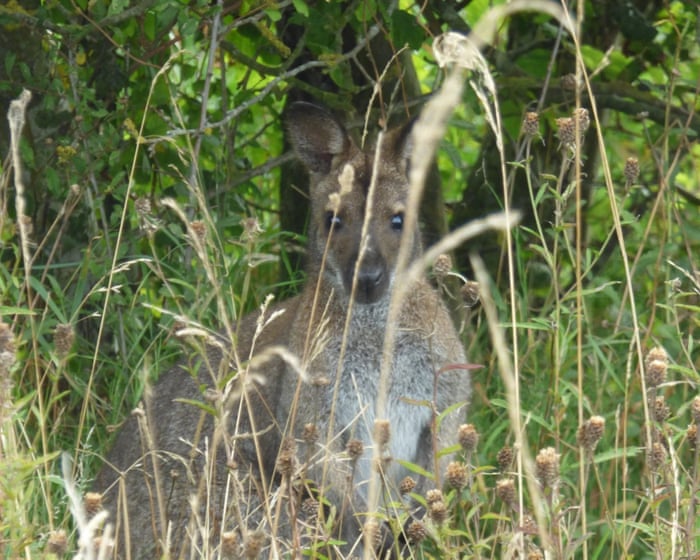At first, Steven Ellis thought the small animal in the distance was a deer, but he soon realized he was seeing something much more unusual.
Ellis was near the village of Ilketshall St Andrew in Suffolk when he pulled out his camera and snapped a photo of the creature—which turned out to be a wallaby.
“We have quite a few deer around here, so I thought I must be wrong,” he said. “But then I realized it looked like a kangaroo. They’re not that different, really. I just stood there wondering, ‘Who should I call about this?’ But I figured no one would believe me.”
Wallabies are native to Australia, but small wild populations—descended from escaped animals—do exist in the UK. Sightings have become more frequent, especially on the Isle of Man.
Ellis’s encounter on Tuesday wasn’t the last. Suffolk police received another call the next day about a sighting roughly seven miles away, near the village of Wissett. The animal hopped off the road and into a field.
A police spokesperson said that despite the brief surge of interest, no further sightings had been confirmed, and no one had come forward to claim ownership of the wallaby.
Police are asking the public to report any sightings directly to them.
In recent years, there have been occasional reports of wallabies escaping from private collections. While they’re generally not considered dangerous to humans, they can be unpredictable and should be approached with caution.
Some wallabies, especially those raised by humans, can be quite tame. Others may startle easily, particularly if they feel threatened.
FAQS
### FAQs About Wallabies Spotted in Suffolk
#### **Basic Questions**
**1. Are there really wallabies in Suffolk?**
Yes! There have been multiple reported sightings of wallabies in Suffolk over the years, often escaping from private collections or wildlife parks.
**2. What does a wallaby look like?**
Wallabies are small to medium-sized marsupials, similar to kangaroos but smaller. They have strong hind legs, long tails, and usually gray or brown fur.
**3. Are wallabies native to the UK?**
No, wallabies are native to Australia and nearby islands. Any sightings in Suffolk are likely escaped or released pets.
**4. How did wallabies end up in Suffolk?**
Most were either kept as exotic pets or in private collections and escaped. Some may have been released intentionally.
**5. Is it legal to keep a wallaby in the UK?**
Yes, but you need a license under the Dangerous Wild Animals Act, as they are considered exotic pets.
—
#### **Intermediate Questions**
**6. How long have wallabies been spotted in Suffolk?**
Reports date back decades, with notable sightings in the 1980s and more recent ones in the 2020s.
**7. Where in Suffolk are wallabies usually seen?**
They’ve been spotted in rural areas, including near Thetford Forest and the Suffolk-Norfolk border.
**8. Could wallabies survive in the wild in the UK?**
Yes—they adapt well to similar climates, like in parts of Scotland and the Isle of Man, where small wild populations exist.
**9. What do wallabies eat in the wild in Suffolk?**
They graze on grass, leaves, and shrubs, much like they do in their native habitat.
**10. Are wallabies dangerous to people or pets?**
Generally no—they’re shy and avoid humans. However, like any wild animal, they may defend themselves if cornered.
—
#### **Advanced Questions**
**11. Could wallabies breed and establish a population in Suffolk?**
It’s unlikely due to low numbers, but in places like the Isle of Man, they’ve formed small breeding groups.




